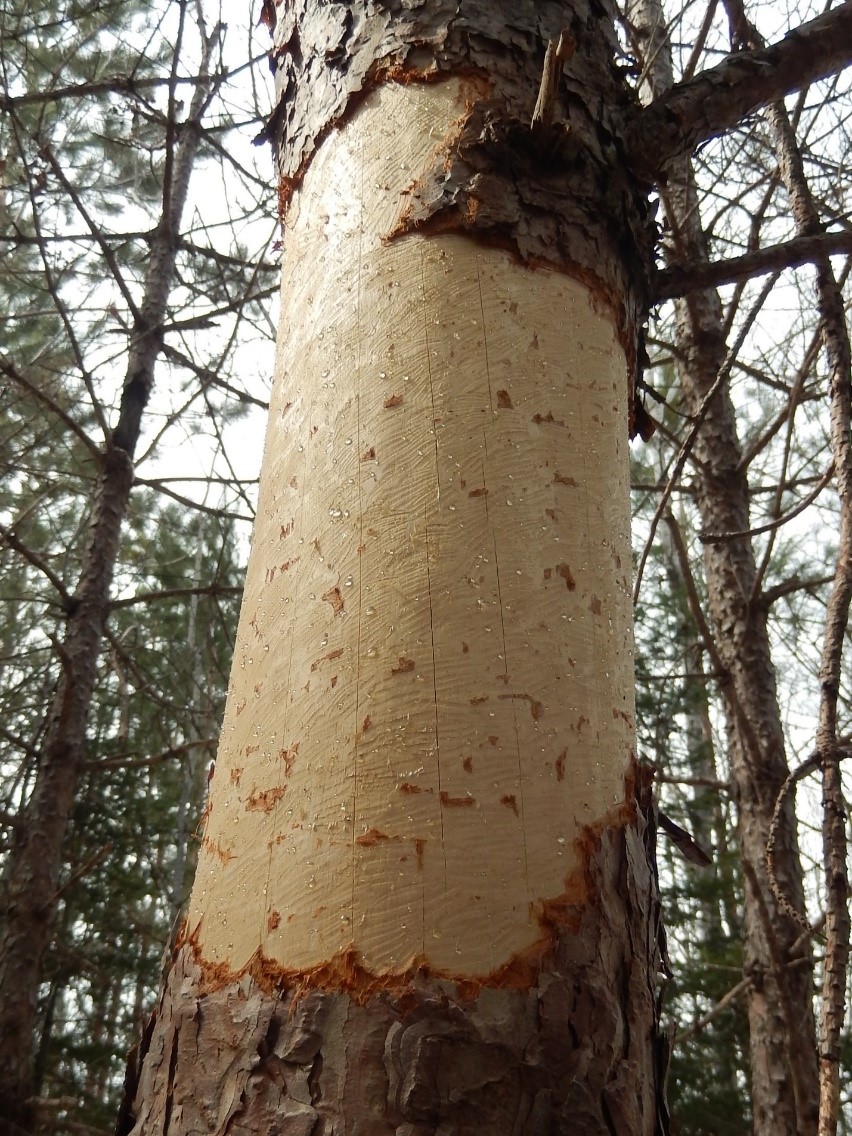By Todd Lanigan, Forest Health Specialist, Eau Claire. Todd.Lanigan@wisconsin.gov or 715-210-0150
Porcupines can damage both conifer and hardwood trees by eating their bark. On sunny days, the bright, white wood where the bark has been stripped readily stands out in the forest, especially on hardwoods. Porcupines can remove large areas of bark, at times enough to completely girdle the trunk or branches. This causes the tree to die from the girdle point upwards on the trunk or outwards on the branch.
Trees and branches that are not entirely girdled will continue to grow and callus tissue will begin to grow over the wounds. On hardwoods, the trunk or branches that are nearly girdled may leaf out in the spring, only to have those leaves suddenly wilt and die as hot weather hits because the tree cannot move enough water to keep the leaves alive. On conifers, the needles may wilt and turn reddish-brown in hot weather. There are no treatment recommendations for porcupine damage.

Porcupine feeding damage on red pine. Photo by Linda Williams, Wisconsin DNR
